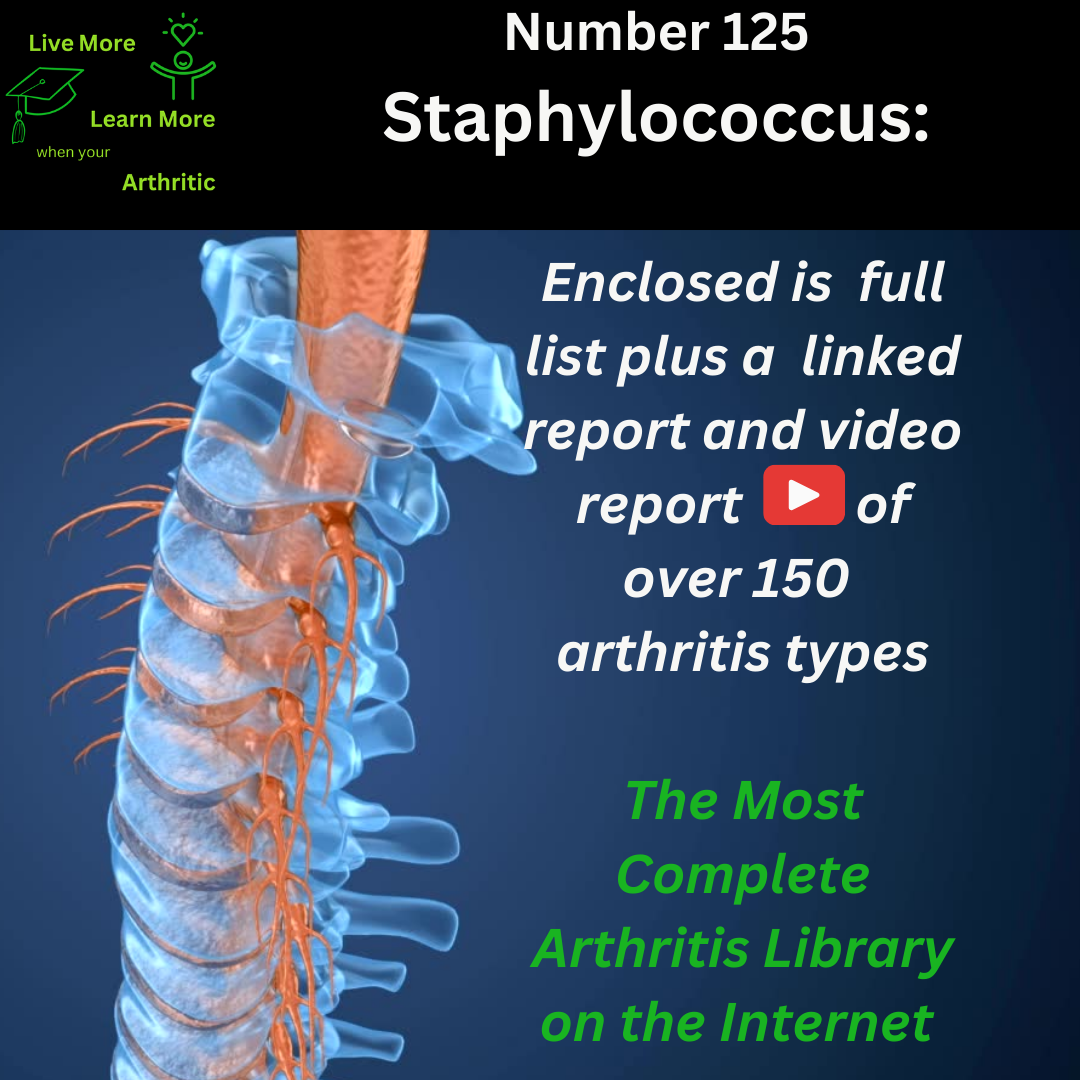
Staphylococcus Arthritis: Number 125 of around 150 types of Arthritis
Unveiling Staphylococcus Arthritis: The Intrusion of an Uninvited Guest
Imagine this: your body’s intricate joints, designed for smooth movement and flexibility, under attack by an unwelcome bacterium known as Staphylococcus. Staphylococcus Arthritis, often caused by Staphylococcus aureus bacteria, can invade joints, triggering inflammation and pain.
Staphylococcus Arthritis commonly targets large joints like the knee, hip, shoulder, and elbow. Symptoms include severe joint pain, swelling, warmth, redness, and limited range of motion. Imagine trying to dance through life with a stiff, swollen joint—definitely not the kind of party you signed up for!
Description and Causes
This form of arthritis is primarily caused by bacterial infection. Staphylococcus bacteria, usually found on the skin or in the nose, can enter the bloodstream due to injury, surgery, or underlying health conditions, spreading to joints and causing infection. The bacteria then wreak havoc, triggering an inflammatory response.
Risk Factors and Triggers
Certain factors increase the risk of developing Staphylococcus Arthritis, including recent surgery, joint injury, diabetes, weakened immune system, intravenous drug use, and skin infections. Picture a game of hide-and-seek, where these bacteria find their way into vulnerable joints, causing havoc.
Complications and Lifespan Changes
Staphylococcus Arthritis can lead to serious complications if left untreated, such as joint destruction, bone infection (osteomyelitis), and systemic infection (sepsis). While prompt treatment can prevent severe complications, untreated cases can impact joint function and quality of life.
Inflammation and Joint Tenderness
Inflammation is a key feature of Staphylococcus Arthritis. The bacteria trigger an immune response, leading to swelling, redness, and warmth around affected joints. Joint tenderness results from inflammation and the accumulation of fluid within the joint space.
Impact on Range of Motion and Mobility
Loss of range of motion is a significant consequence of Staphylococcus Arthritis. The inflammation and swelling restrict joint movement, making daily activities challenging. Imagine struggling to bend your knee or lift your arm due to stiffness and pain—it’s like being stuck in a rigid, uncomfortable frame.
Proactive Approach for Improved Quality of Life
While Staphylococcus Arthritis can be debilitating, a proactive approach is crucial for better outcomes. Early diagnosis and prompt antibiotic treatment are essential to eradicate the bacteria and prevent joint damage. Physical therapy helps restore joint function and mobility.
Possible Complications and Age of Onset
Complications of Staphylococcus Arthritis include chronic joint pain, stiffness, joint deformity, and recurrent infections. The condition can affect individuals of all ages, but older adults and those with weakened immune systems are at higher risk.
 Gender Disparities and Interconnected Conditions
Gender Disparities and Interconnected Conditions
Staphylococcus Arthritis affects both men and women, with no significant gender predilection. Individuals with underlying conditions like diabetes, rheumatoid arthritis, or those undergoing invasive procedures are more susceptible to bacterial joint infections.
In summary, Staphylococcus Arthritis is a formidable adversary, but with timely intervention and proactive management, individuals can regain mobility and lead fulfilling lives. Understanding the causes, symptoms, and risk factors empowers individuals to take preventive measures and seek prompt medical attention to thwart the unwelcome advances of Staphylococcus bacteria.


